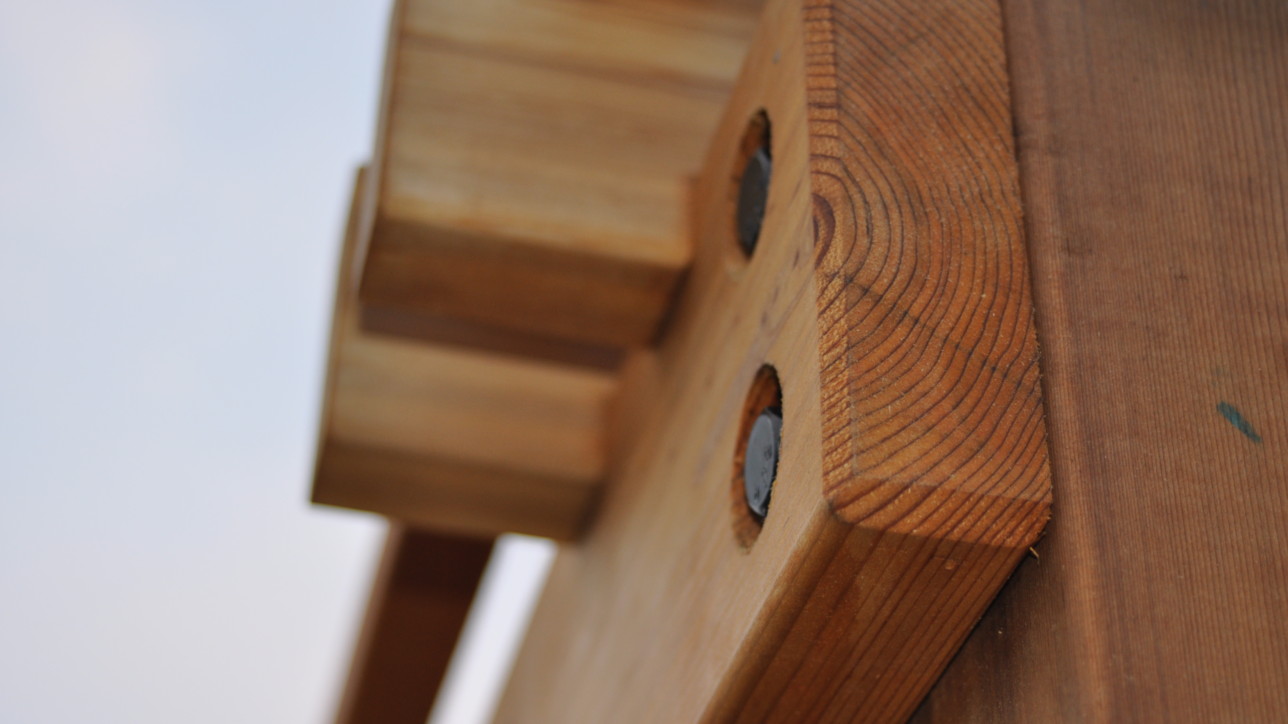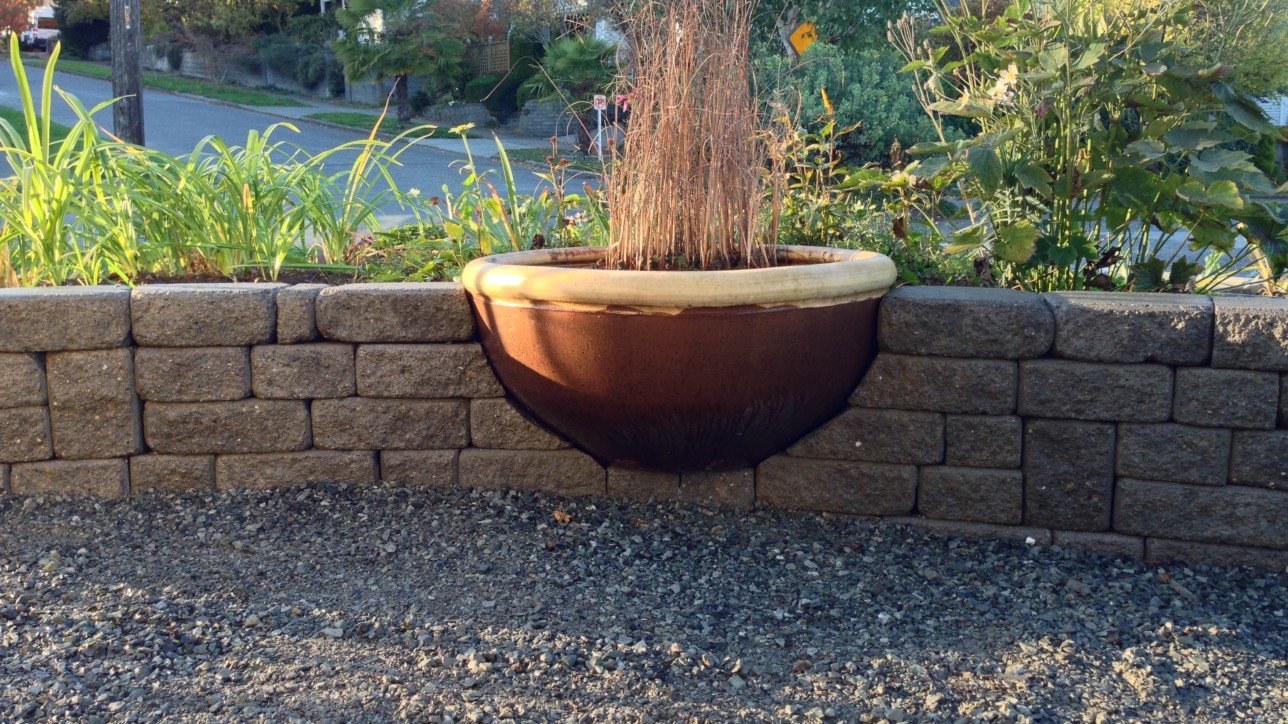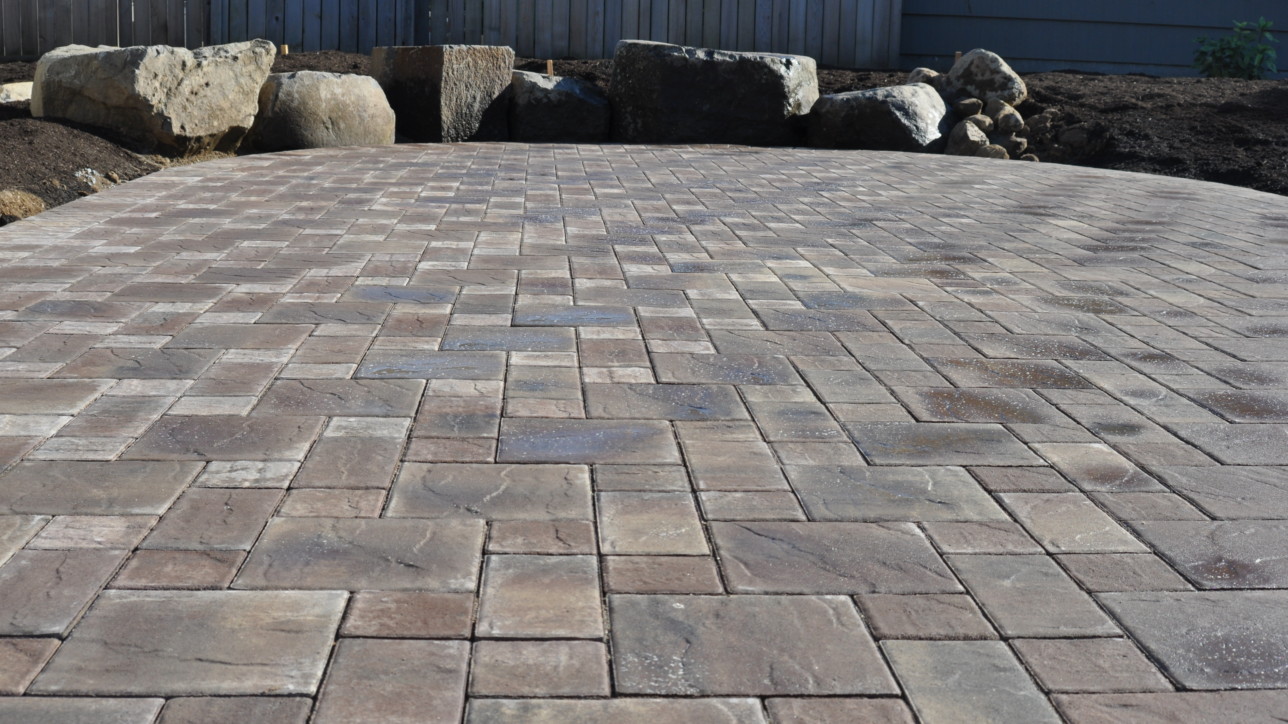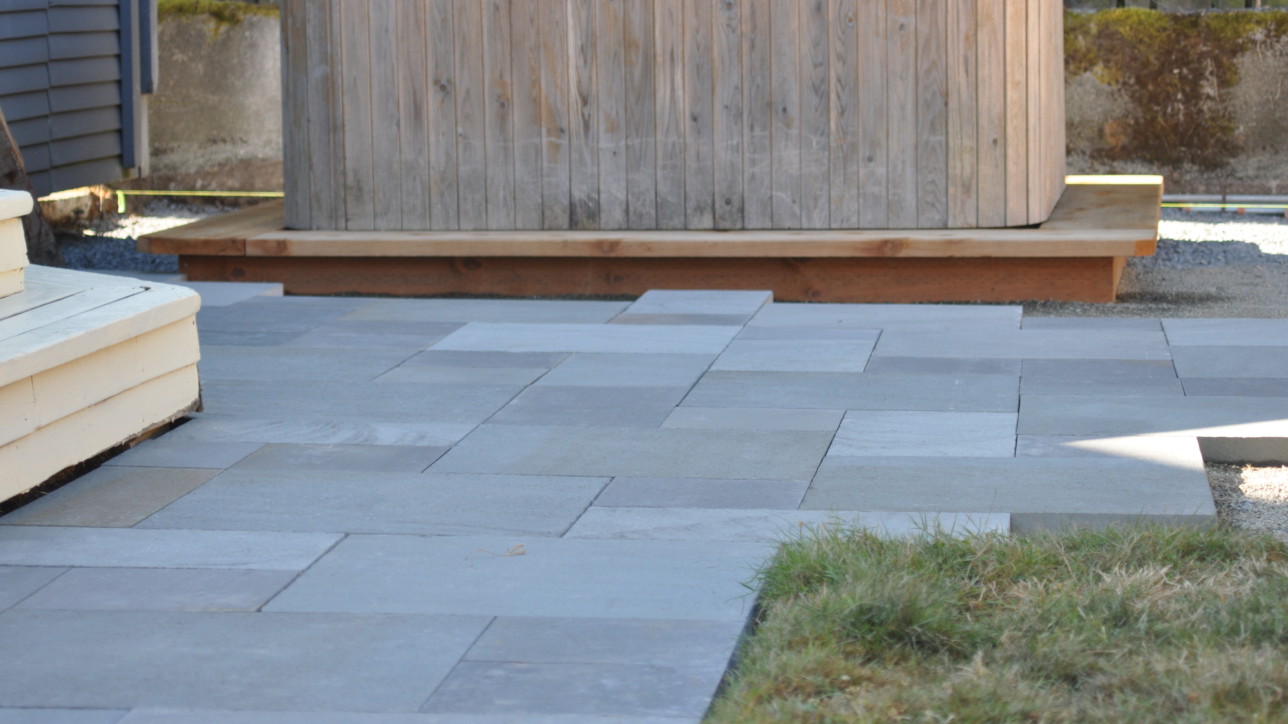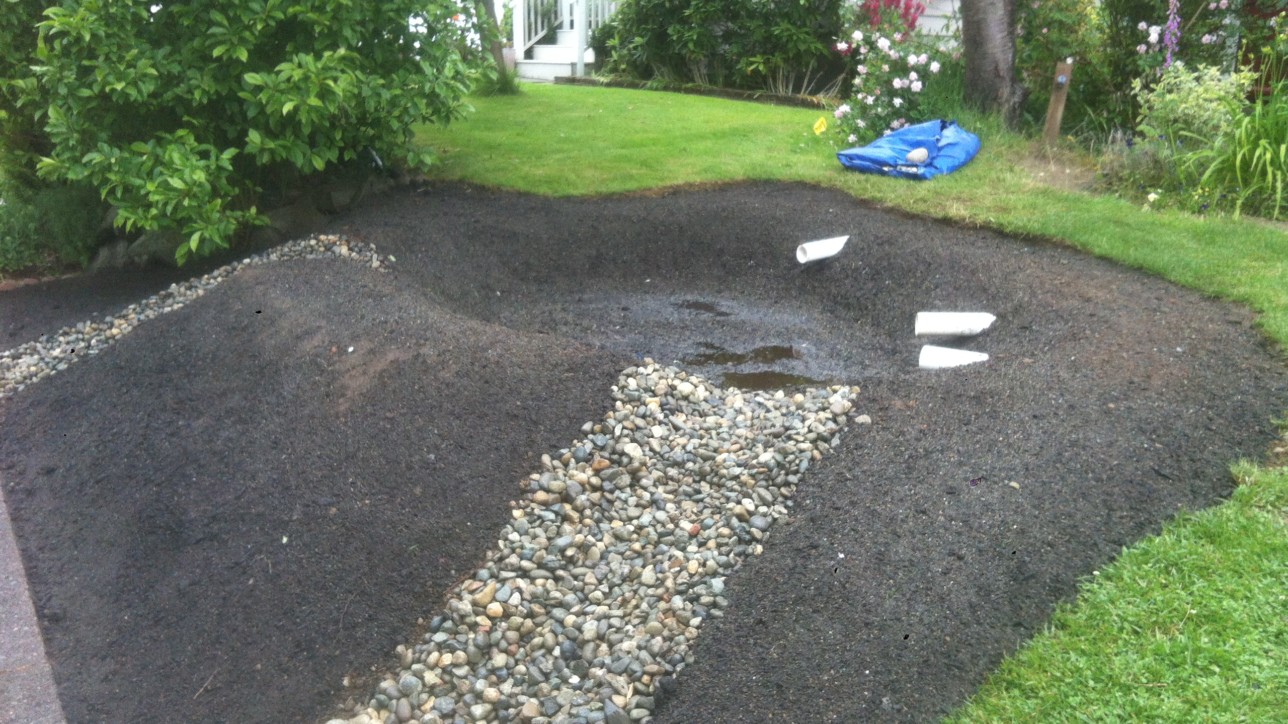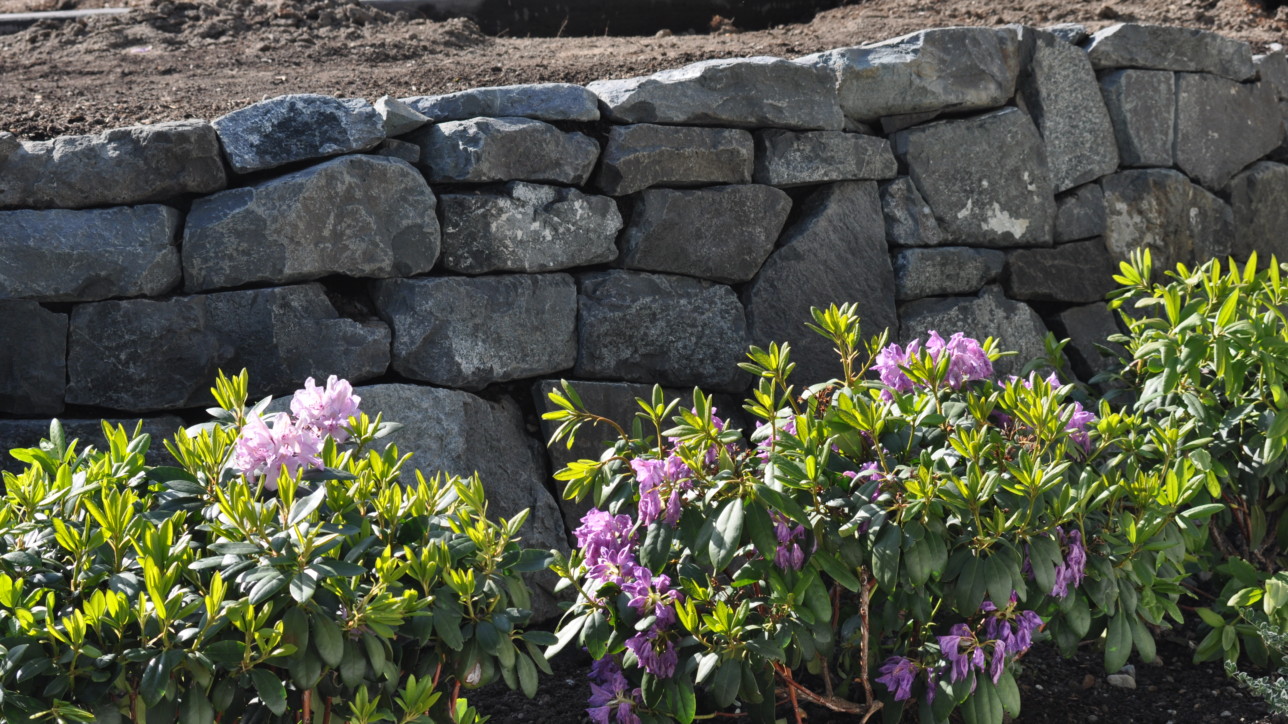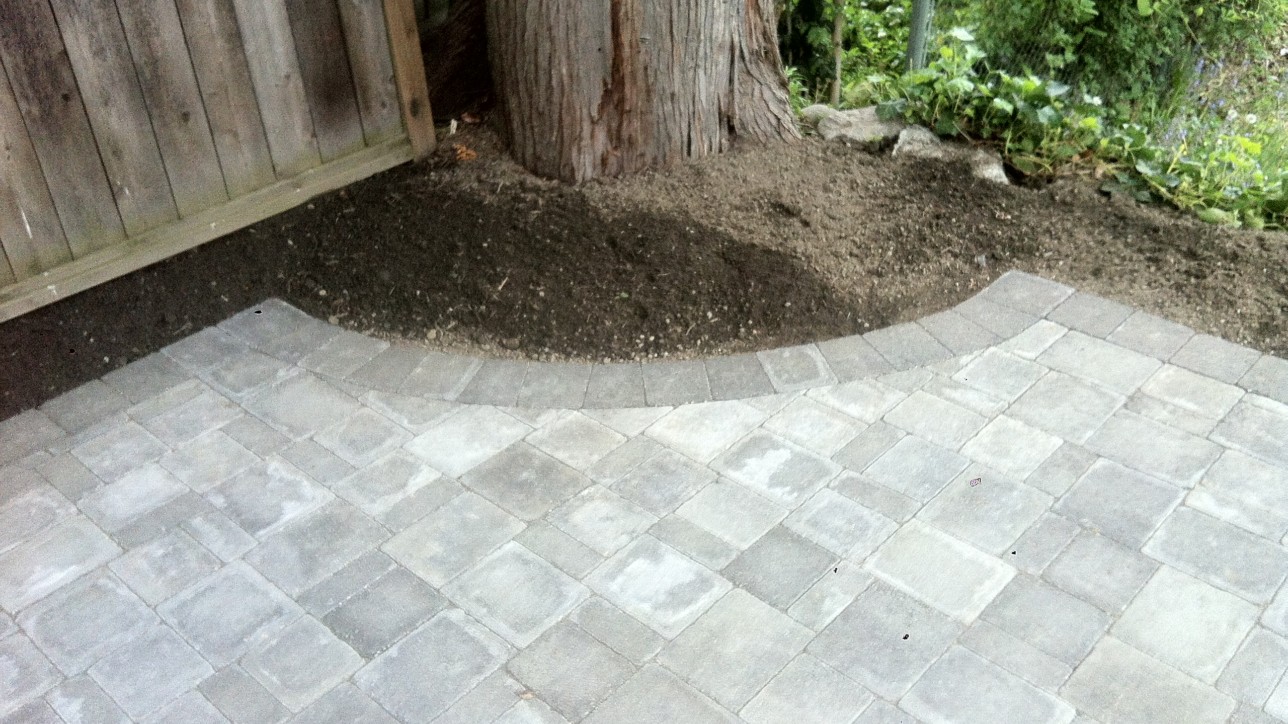[dropcap type=”circle” color=”#ffffff” background=”#ef7f2c”]J[/dropcap]anuary, during the rain and short days, I constructed a block wall for some clients on Phinney Ridge. The construction of the project took about one month, and consisted of nearly 1000 individual 6″ X 8″ X 12″ blocks. The wall itself was 100′ long, and averaged a height of 40″. It transected a property line between three neighbors, and ran from sidewalk to alley way.
The demolition phase of the project took nearly a week, most of that spent removing the previous wall and some partially rotten cedar stumps.
When the initial demo phase was completed, with a 24″ trench a few inches deep roughed out, I took a transit and set my heights, to know where the steps would have to be located. From lowest point to highest, the wall gains about 3.5 feet of elevation. Meaning, at the furthest, lowest, point of the wall, to the other end, the height of the wall changed from 4 feet to around 18″.
In order to preserve a natural bamboo hedge, the client asked to create a stepped out planting space for it. This also served as to keep the root zone further off the neighbors property. The finished effect looks like we’ve created a finished planter for the bamboo, and really accentuates the beauty of this leafy hedge.
The top is capped with a 3″ X 24″ X 12″ ridge cap, and mitered on all the corners with but joints at the ends.
The manufacturer of the block is Mutual Materials, and the variety is Pisa II. They offer a wide selection of decorative block and paver products and sell a very quality product at an affordable price. My friends down at Pavingstone Supply Co. in Ballard carry their products – and they’re open to the public so that clients can browse their extensive natural and concrete products.
All things considered, it was a pleasant and cathartic way to spend a mid-winter in Seattle. I spent my days in a kind of meditation, listening to podcasts and the audio version of Les Miserables while schlepping nearly a thousand blocks from their individual pallets to the wall. Tapping each one, adjusting, checking, leveling, checking, grinding, checking. There is something about building a wall that makes you feel alive – and this one was no exception.
Thanks for reading, I’ll try to update soon with some more shots of recent work.
Cheers,
-Reese Zollinger

